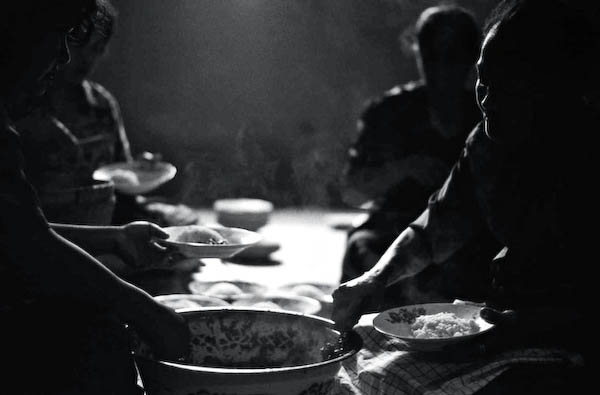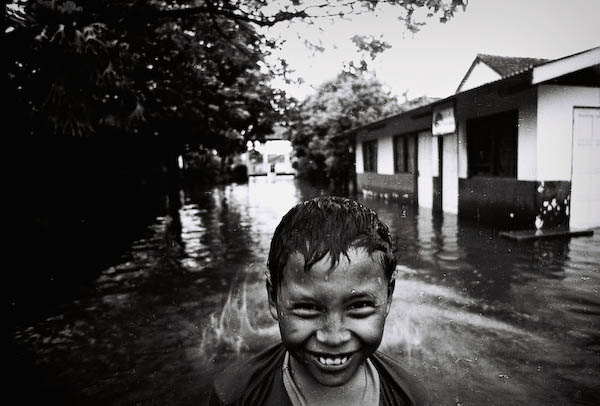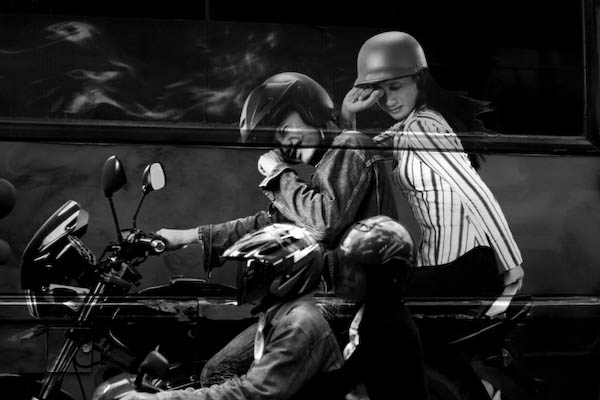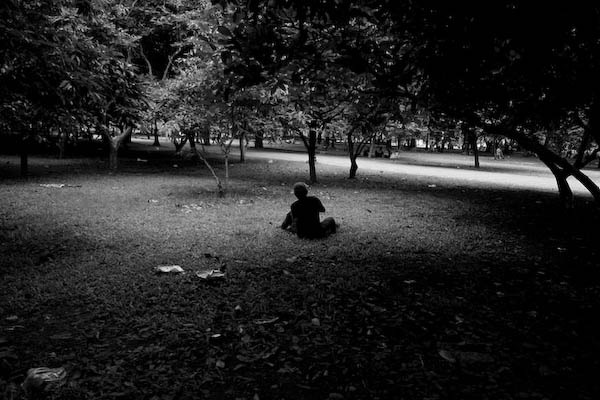An interview with Karolus Naga
When I first set my eyes on the works of Karolus Naga, I can’t take my eyes off of the rich black & white pictures. But that’s not all, it’s the content that really seduce you. He sees the world around him, the simple daily life, and turns it into a beautiful picture along with beautiful texts. Yes, I think he writes as good as he takes pictures, no doubt about it. And while I think he’s a good photographer, a really good one, I think he’s bigger than that. I think we’re seeing a philosopher with a camera and a big dream ready to set his feet in the big world out there.
I‘m so tired but I can’t sleep
Standing on the edge of something much too deep
It’s funny how we feel so much but
We cannot say a word
We are screaming inside but
We can’t be heard
— Sarah McLachlan
Tell us a bit about yourself?
I’m twenty something male, with underexposed brain and overexposed dreams. And sad to say to all the chicks out there, I’m taken.
What do you do for a living? How does photography get along with your life?
Freelance photographer, that’s what the dictionary says. But you should try my brew, ha-ha kidding.
When did you first learn about photography? Initially, what did you wanted to be?
First taking pictures at 10, latter at 18 started to opened my eyes and dig inch by inch about what the heck photography is. Wasting my time in the dark room of my campus by my self, at age 21 each time I got a new lesson, there always thousand new things that I don’t know (about it). Even until now, I am as blind as the first time I started to be in love with photography. Love is blind anyway…
As a beginner, I learned most of its fields. Landscape, studio, portrait, stage performance, still life, street, macro, etc … and now I’m focusing on documentary photography. It’s funny how our life – I mean our ordinary life – looks great on a still frame.

What do you enjoy when not taking pictures?
Chess game, killing my time by reading books although I’ve already read it for many times, playing with my dog, Friday night futsal, fishing, chit chat with LSD, blog walking, news browsing etc…
But the most enjoying thing to me is in the dark room, developing the films. It’s my personal pleasure.
What is/are your special talent(s) beside photography?
To tell the truth, I dot have any talents even in photography. But this just between me and you, I just pretend to look like a talented person.

When did you start your blog? How important it is for a photographer to have a blog?
I think it was 2006, started with personal stuff – writings and pictures – then I changed the content at 2007 to show off my photographs – once again just to pretend that I am a photographer that loves to blog. For me, a blog is similar to an exhibition gallery of who the hell I am.
The world is a global village, said Marshall McLuhan. If you read again the words from Sarah – one that I put on the very first place of this interview page – you can figure out the meaning of an online page to everyone, no matter if you are photographer or not. Internet it self has become a ‘world’ where everybody from all round the globe connected through it. With an online page – blog in our case – we can introduce our self to the worldwide (our way of view), making connection, learning from the others works and develop our own style.
We notice on your blog that you write as good as you take pictures. While there’s a saying that a picture worth’s a thousand words, what do you think of the connection between good texts and good pictures? Which one do you enjoy most, writing or taking pictures?
I used to trust on that phrase, long time ago. I used to trust that a one point three mega pixel picture worth’s a thousand words.
But when 2002 – the first time I ‘met’ Roland Barthes – I decided to re-think about the phrase once again. I’m a barthesian for sure and ‘a picture cannot tells me the things that I wanted to see’. It worth’s nothing if there is no viewers, who have great power to put words into it. I’m not going to talking about visual semiotics craps as Barthes did on his works but indeed, his works influenced me specially when I seeing a photograph. For me, making a photograph and seeing a photograph is two different things. Writing and photography do have one thing in common, they ought to tell something. For instance, If I wanted to tell you about the East Channel Project, I can write it down in thousand words about those who lived in the Kali Adem riverside – North Jakarta easily. I will stay there for a month; dig out their stories and choosing the topic of which I wanted to tell with such style so that when you read it, you going to feel like you live there. But can I tell it with a photograph or a series of photographs. Yes, it has the same process as writing. The hard part is to stay on the track, focusing on what you want to say in each frame. I heard that when one applying on ANTARA as a photographer, he/she must entering the journalistic course where they must learn to be a reporter (writer). It’s a great lesson to learn from the writers. How they keep the simplicity in telling without blurring the reality, like those collaborating works on NatGeo magazine.
Writing is just another hobby like photography, writing is a way to put my way of view – documenting – about something. My writings on a project used to covers up the things that my pictures can not tell and so as my pictures to my writings.
You have some series going on your blog. Do you have a long term photography project?
Yes, I have two long term projects and they’re being started since 2005. My goal is to make a book to each project.

What kind of photographer are you?
If you wanted to know about my specialization in photography, I would say that I am a documentary photographer. I documenting things that I encounter on my everyday life. Trash bins, art performances, my visits to a place, gathering with friends, temples, and so on…
Where is your favorites place to take pictures? And what is your favorites subject/object to photograph?
Linked to the previous answer, I photographed everything that I wanted to photograph. You can photograph everything now said Robert Frank.
Why black and white?
It’s a simple romantic format.

What/who has the biggest influence in your photographs?
There are many names. Photographers, philosophers, painters, writers, singers, street performers, comedians, movies etc…
I really enjoy essay’s or stories, one that thematically built by those great person who talk about something freely through photographs. Sometimes they speak about something that most of us wont. The Swing from Rama Surya, Sugar Cane Blues by Edi Hasby, Paris de Nuit by Brassai, Oscar Motuloh’s Art of Dying, Tippi Nicole Thole work with Pamela Sullentrup and many more. It’s great to learn from those by exploring their works. I always started with questions, why she/he choose this topic, what he/she tries to tell, why he/she takes it like this, what’s the mean of these dark area, why it’s so elegant and so on and so on …
What do you think of photography in Indonesia?
Photography is not an exclusive thing anymore in this country. There are lots of Indonesian photographers with world class reputation, they even younger than I am. You can lug a camera, learn the basic, go out and capture the world and introduce yourself as a photographer.
What is the meaning of photography for you?
Sontag wrote on her book, ‘to photograph is too appropriate the things photographed. It means putting oneself into a certain relation to the world that feels like knowledge-and therefore, like power’. She added on the same book, ‘to collect photographs is to collect world’.
For me, photography is an act of creating – the world; the world that we – photographers – passionately built, a world that we built on every photographs that we make. Still with Sontag, she said ‘in teaching us a new visual code, photographs alter and enlarge our notions of what is worth looking at and what we have a right to observe. They are a grammar and, even more importunately, an ethics of seeing’.
We develop images in our head and printed it into a photograph. We choose the subject, see it from different angle, calculating the amount of lights and then pull the trigger. Bang, a world created on a click – not in seven days. We are murderer at the same time. We kill the subject, frozen them into a thin film and wait for their resurgence when displaying them to the viewers. Signification as Barthes said, turning analogon to a world. We see a picture, tracking the stories on it, tracing every outlines of juxtaposed, reading it and asking to our self why this photographed. Kertész gives reason on everything he encounters with his camera, Arbus sees secret of a secret and Winogrand sees life on his photographs.

—
More of Karolus Naga can be seen on his blog, The Author Is Dead.
Toni Greaves

Dominican Nuns, Summit, New Jersey © Toni Greaves
The Dominican Nuns of Summit, New Jersey are a Roman Catholic cloistered monastic community. Their primary mission is to pray for the salvation of souls, and to support the preaching mission of the Dominican friars. The 21 Nuns lead a hidden life of Eucharistic prayer, adoration, thanksgiving, and intercession. At the time of taking this photo, 21-year-old Sister Lauren Franko had been a Novice Nun for two months. Now 22, she recently had her “clothing ceremony” –her official engagement to God– where she received the Dominican habit and took a new, holy, name of her choosing… Sister Maria Teresa of the Sacred Heart.
(via Verve Photo)
Seth Godin: Expertise and passion
It’s more important that you be passionate about what you do all day than it is to be passionate about the product that is being sold. […] Best of both worlds: someone who has passion (and skill and insight) about their task and passion about the mission. The latter can never replace the former. Organizations staffed with sports fans or true believers worry me, because they often use their passion as an excuse for poor performance. What worries me more are the employees who have neither expertise nor passion.
Polaroid: End of an Era
Polaroid Corporation stops making its instant film this month. The Polaroid process and its absolutely unique style of photographic magic inspired generations to try to capture some of the ordinary beauty of day-to-day moments. This instant delight (and its signature look) can’t be matched by any digital process today.
Seth Godin: 10,000 hours
You win when you become the best in the world, however ‘best’ and ‘world’ are defined by your market. In many mature markets, it takes 10,000 hours of preparation to win because most people give up after 5,000 hours. That’s the only magic thing about 10k… it’s a hard number to reach, so most people bail.
Hiroshi Sugimoto: Visions In My Mind

What is fascinating about Sugimoto’s photographs is that even when looking at work from 20 or 30 years ago, it still seems very much contemporary and recent. The reasons for this are surely manifold, but not least because of the use of black and white, the often archetypal subject matter and ultimately the work’s examination of timelessness itself (which would make an interesting nested double conundrum). This short documentary is an attempt to get a better impression about the man behind the pictures.
(via Japan Exposures)
A New Hope
Hanne Hvattum

from Beautiful Mind © Hanne Hvattum
I sometimes feel that being a freelance photographer is a secret shortcut to the life I’ve always dreamt of living. I get to meet so many people and see so many places. I get to learn so much about the world and the people living in it. And even if photographing someone or something doesn’t always make me understand, it always makes me wonder. Makes me ask questions. And I guess that´s all we can do, trying to figure out this chaotic, intense, beautiful, overwhelming, horrifying, fantastic, frustrating, wonderful world.
Burn Magazine
Say hello to Burn Magazine and say goodbye to Road Trip. Here’s a few words from David Alan Harvey.
[..] burn is born from an educational imperative and to bring strong photographic essays and powerful text to not only photographers, but to anyone fascinated by a visual and literary interpretation of our complex planet. Your interpretations may be either journalistic in nature or esoteric subjective pieces. I hold all artists in high regard. With me as editor/curator you need never think “what does he want or like?” I will push you to do your thing, not mine…
We will do something very special right here on burn. A collaboration between thee and me. Adventure. Always exploring new territory. With YOU as the authors.
Authors of your own destiny.
Boston Big Picture: 2008, a year in photographs
Boston Big Picture: 2008, a year in photographs. Part 1. Part 2. Part 3.
2008 has been an eventful year to say the least – it is difficult to sum up the thousands of stories in just a handful of photographs. That said, I will try to do what I’ve done with other photo narratives here, and tell a story of 2008 in photographs. It’s not the story of 2008, it’s certainly not all stories, but as a collection it does show a good portion of what life has been like over the past 12 months. This is a multi-entry story, 120 photographs over three days.
